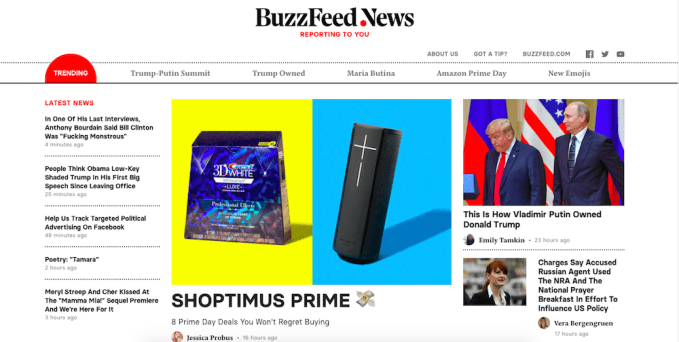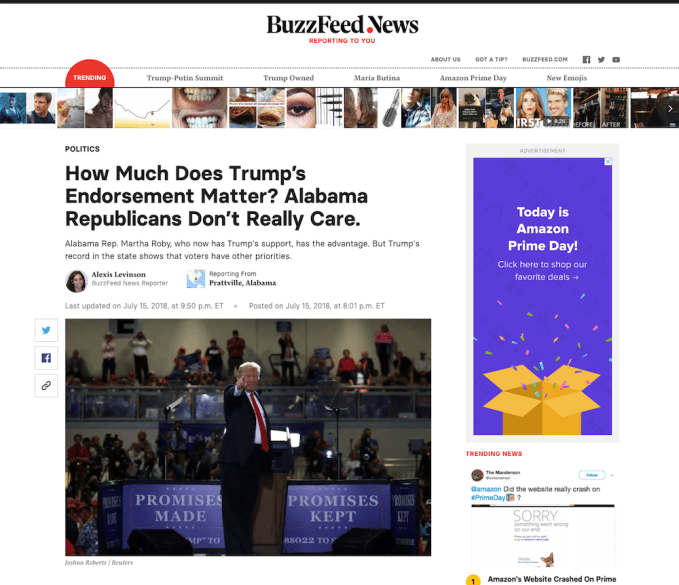Google has been fined a record breaking €4.34 billion (~$5BN) by European antitrust regulators for abusing the dominance of its Android mobile operating system.
Competition commissioner Margrethe Vestager has tweeted to confirm the penalty ahead of a press conference about to take place. Stay tuned for more details as we get them.
In a longer statement about the decision, Vestager said: “Today, mobile internet makes up more than half of global internet traffic. It has changed the lives of millions of Europeans. Our case is about three types of restrictions that Google has imposed on Android device manufacturers and network operators to ensure that traffic on Android devices goes to the Google search engine. In this way, Google has used Android as a vehicle to cement the dominance of its search engine. These practices have denied rivals the chance to innovate and compete on the merits. They have denied European consumers the benefits of effective competition in the important mobile sphere. This is illegal under EU antitrust rules.”
In particular, the EC has decided that Google:
- has required manufacturers to pre-install the Google Search app and browser app (Chrome), as a condition for licensing Google’s app store (the Play Store);
- made payments to certain large manufacturers and mobile network operators on condition that they exclusively pre-installed the Google Search app on their devices; and
- has prevented manufacturers wishing to pre-install Google apps from selling even a single smart mobile device running on alternative versions of Android that were not approved by Google (so-called “Android forks”).
The decision also concludes that Google is dominant in the markets for general internet search services; licensable smart mobile operating systems; and app stores for the Android mobile operating system.
This story is developing… refresh for updates…
The fine is the second major penalty for the ad tech giant for breaching EU competition rules in just over a year — and the highest ever issued by the Commission for abuse of a dominant market position.
In June 2017 Google was hit with a then-record €2.4BN (~$2.7BN) antitrust penalty related to another of its products, search comparison service, Google Shopping. The company has since made changes to how it displays search results for products in Europe.
According to the bloc’s rules, companies can be fined 10 per cent of their global revenue if they are deemed to have breached European competition law.
Google’s parent entity Alphabet reported full year revenue of $110.9 billion in 2017. So the $5BN fine is around half of what the company could have been on the hook for if EU regulators had levied the maximum penalty possible.
The Commission said the size of the fine takes into account “the duration and gravity of the infringement”. It also specified it had been calculated on the basis of the value of Google’s revenue from search advertising services on Android devices in the European Economic Area (per its own guidelines on fines).
Google will have three months to pay the fine but is likely to appeal — and legal wrangling could drag the process out for many years. Although if it does not pay the fine within that timeframe penalty payments of up to 5% of the average daily worldwide turnover of the company can be applied.
We’ve reached out to Google for its reaction.
Prior to the Commission’s record pair of fines for Google products, its next highest antitrust penalty is a €1.06BN antitrust fine for chipmaker Intel all the way back in 2009.
Yet only last year Europe’s top court ruled that the case against Intel — which focused on it offering rebates to high-volume buyers — should be sent back to a lower court to be re-examined, nearly a decade after the original antitrust decision. So Google’s lawyers are likely to have a spring in their step going into this next European antitrust battle.
The latest EU fine for Android has been on the cards for more than two years, given the Commission’s preliminary findings and consistently prescriptive remarks from Vestager during the course of what has been a multi-year investigation process.
And, indeed, given multiple EU antitrust investigations into Google businesses and business practices (the EU has also been probing Google’s AdSense advertising service).
The Commission’s prior finding that Google is a dominant company in Internet search — a judgement reached at the culmination of its Google Shopping investigation last year — is also important, making the final judgement in the Android case more likely because the status places the onus on Google not to abuse its dominant position in other markets, adjacent or otherwise.
Announcing the Google Shopping penality last summer, Vestager made a point of emphasizing that dominant companies “need to be more vigilant” — saying they have a “special responsibility” to ensure they are not in breach of antitrust rules, and also specifying this applies “in the market where it’s dominant” and “in any other market”. So that means — as here in the Android case — in mobile services too.
While a one-off financial penalty — even one that runs to so many billions of dollars — cannot cause lasting damage to a company as wealthy as Alphabet, of greater risk to its business are changes the regulators can require to how it operates Android which could have a sustained impact on Google if they end up reshaping the competitive landscape for mobile services.
At least that’s the Commission’s intention: To reset what has been judged an unfair competitive advantage for Google via Android, and foster competitive innovation because rival products get a fairer chance to impress consumers.
However the popularity and profile of Google services suggests that even if Android users are offered a choice as a result of an EU antirust remedy — such as of which search engine, maps service, mobile browser or even app store to use — most will likely pick the Google-branded offering they’re most familiar with.
That said, an antitrust remedy could have the chance to shift consumers’ habits over time — if, for instance, OEMs start offering Android devices that come preloaded with alternative mobile services, thereby raising the visibility of non-Google apps and services.
Interestingly, Google has been striking deals with Chinese OEMs in recent months — to brings its ARCore technology to markets where its core services are censored and its Play Store is restricted. And its strategy to workaround regional restrictions in China by working more closely with device makers may also be part of a plan to hedge against fresh regulatory restrictions being placed on Android elsewhere.
Although complainants in the EU’s earlier Google Shopping antitrust case continue to express displeasure with the outcome on that front. And in a statement responding to news that another EU antitrust penalty was incoming for Android, Shivaun Raff, CEO of Foundem, the lead complainant in Google Shopping case, said: “Fines make headlines. Effective remedies make a difference.”
So the devil will be in the detail of the remedies.
Android as an antitrust ‘Trojan horse’
The European Commission announced its formal in-depth probe of Android in April 2015, saying then that it was investigating complaints Google was “requiring and incentivizing” OEMs to exclusively install its own services on devices on Android devices, and also examining whether Google was hindering the ability of smartphone and tablet makers to use and develop other OS versions of Android (i.e. by forking the open source platform).
Rivals — banding together under the banner ‘FairSearch‘ — complained Google was essentially using the platform as a ‘Trojan horse’ to unfairly dominate the mobile web. The lobby group’s listing on the EU’s transparency register describes its intent as promoting “innovation and choice across the Internet ecosystem by fostering and defending competition in online and mobile search within the European Union”, and names its member organizations as: Buscapé, Cepic, Foundem, Naspers, Nokia, Oracle, TripAdvisor and Yroo.
On average, Android has around a 70-75% smartphone marketshare across Europe. But in some European countries the OS accounts for an even higher proportion of usage. In Spain, for example, Android took an 86.1% marketshare as of March, according to market data collected by Kantar Worldpanel.
In recent years Android has carved an even greater market share in some European countries, while Google’s Internet search product also has around a 90% share of the European market, and competition concerns about its mobile OS have been sounded for years.
Last year Google reached a $7.8M settlement with Russian antitrust authorities over Android — which required the company to no longer demand exclusivity of its applications on Android devices in Russia; could not restrict the pre-installation of any competing search engines and apps, including on the home screen; could no longer require Google Search to be the only general search engine pre-installed.
Google also agreed with Russian antitrust authorities that it would no longer enforce its prior agreements where handset makers had agreed to any of these terms. Additionally, as part of the settlement, Google was required to allow third parties to include their own search engines into a choice window, and to allowing users to pick their preferred default search engine from a choice window displayed in Google’s Chrome browser. The company was also required to develop a new Chrome widget for Android devices already being used in Russia, to replace the standard Google search widget on the home screen so they would be offered a choice when it launched.
A year after Vestager’s public announcement of the EU’s antitrust probe of Android, she issued a formal Statement of Objections, saying the Commission believed Google has “implemented a strategy on mobile devices to preserve and strengthen its dominance in general Internet search”; and flagging as problematic the difficulty for Android users whose devices come pre-loaded with the Google Play store to use other app stores (which cannot be downloaded from Google Play).
She also raised concerns over Google providing financial incentives to manufacturers and mobile carriers on condition that Google search be pre-installed as the exclusive search provider. “In our opinion, as we see it right now, it is preventing competition from happening because of the strength of the financial incentive,” Vestager said in April 2016.
Google was given several months to respond officially to the antitrust charges against Android — which it finally did in November 2016, having been granted an extension to the Commission’s original deadline.
In its rebuttal then, Google argued that, contrary to antitrust complaints, Android had created a thriving and competitive mobile app ecosystem. It further claimed the EU was ignoring relevant competition in the form of Apple’s rival iOS platform — although iOS does not hold a dominant marketshare in Europe, nor Apple have a status as a dominant company in any EU markets.
Google also argued that its “voluntary compatibility agreements” for Android OEMs are a necessary mechanism for avoiding platform fragmentation — which it said would make life harder for app developers — as well as saying its requirement for Android OEMs to use Google search by default is effectively its payment for providing the suite for free to device makers (given there is no formal licensing fee for Android).
It also couched “free distribution is an efficient solution for everyone” — arguing it lowers prices for phone makers and consumers, while “still letting us sustain our substantial investment in Android and Play”.
In addition, Google sought to characterize open source platforms as “fragile” — arguing the Commission’s approach risked upsetting the “balance of needs” between users and developers, and suggesting their action could signal they favor “closed over open platforms”.





